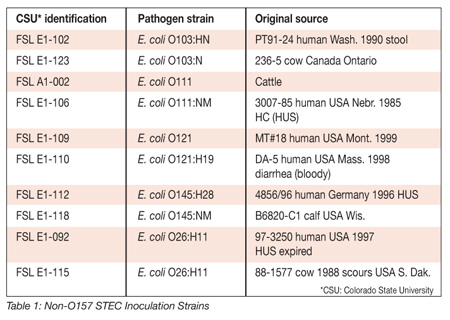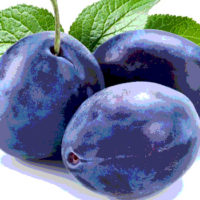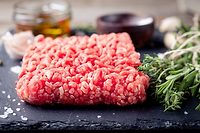The U.S. Department of Agriculture (USDA) Food Safety and Inspection Service (FSIS), as almost all in the meat industry are aware, announced last spring that they intend to clarify expectations for validating Hazard Analysis and Critical Control Points (HACCP) systems via issuance of a Guidance document addressing that component of regulatory requirements. A Draft Guidance document was first posted to the FSIS website on March 19, 2010 for public comment; the comment period closed on June 19, 2010 (after an initial extension), but it is unclear at this point when a Final Guidance will be released or if another Draft Guidance for public comment will be circulated. There have been some indications out of Washington, DC that we can expect to see something during the spring of 2011. The exact content of the pending Guidance has proven to be a source of heartburn for many in industry, as companies struggle to anticipate what will constitute appropriate “validation.”
Rightfully so, the USDA FSIS suggested in public meetings concerning the Draft Guidance that confusion has ensued over the years concerning this topic—among both industry and inspection personnel—since 1996 when the Pathogen Reduction HACCP Final Rule was first published. In support of this contention, a recent report of the American Academy of Microbiology, resulting from a colloquium “to review the current state of affairs in microbiological food safety around the world,” recommended that “Increased investment and research commitment is needed to develop, validate and apply innovative food safety interventions and to validate the effectiveness of interventions
already in use.”[1]
The Draft Guidance circulated in March 2010 stipulated that validation would consist of “the process of demonstrating that the HACCP system as designed can adequately control identified hazards to produce a safe, unadulterated product.” The Draft further stated that “There are two distinct elements to validation: (1) the scientific or technical support for the HACCP system and (2) the initial practical in-plant demonstration proving the HACCP system can perform as expected.” A letter from Alfred Almanza, FSIS Administrator, to the meat trade in March 2010 clearly suggested that, along with meeting these criteria for CCPs, plants will also be expected to meet the same criteria for prerequisite programs when such programs are used in Hazard Analysis logic to justify why an identified hazard is not significant, thereby not requiring a CCP to control it, and also when food safety warning labels are used to address a significant hazard.
What Can We Expect?
Discussion during public meetings suggested that the FSIS intends to focus more emphasis on explaining expectations regarding the second element of validation in the Guidance rather than on the first element. It is our contention that, perhaps, both elements require clarification—especially if scientists are to conduct applied research and publish results in peer-reviewed journals such that those results are meaningful in the context of which hazards need validation—now and in the future—and which pathogens are to be considered.
For example, we know that FSIS will require validation of intervention system effectiveness for Escherichia coli O157:H7 on beef in each facility, both by way of scientific support and via in-plant data, substantiating that the system works in practice. We also know that a plethora of scientific studies have been conducted over the past 16 years addressing this topic, that those studies were subsequently published in peer-reviewed journals and that they documented under laboratory-controlled conditions the effectiveness of a multitude of potential plant systems, using both quantitative counts of indicator organisms as well as inoculated E. coli O157:H7. What we don’t know are the answers to the two following questions: (1) How should a company document that the laboratory-controlled results translate into similar results when implemented in a meat production plant under equal application parameters (relating to the second required element of validation)? (2) Is it necessary to re-do each laboratory validation study each time a new pathogen of concern is identified (relating to the first required element of validation)?
Where Are the Answers?
According to a www.meatpoultry.com report from the North American Meat Processors annual meeting in Scottsdale, AZ on October 29, 2010,[2] these questions may already require an answer. Dr. Dan Engeljohn, FSIS Assistant Administrator, was quoted as saying, “FSIS plans to move forward on non-O157 [Shigella toxin-producing E. coli] STECs . . . The agency is working to develop reliable test methodologies for the six STECs of primary concern—four of six have been developed so far.” Dr. Engeljohn’s comment came shortly after a September 2 New York Times story was published, addressing a recall of ground beef found to have caused illness from contamination with E. coli O26.[3] The story quoted a written statement by Dr. Elisabeth Hagen, appointed only a month earlier as USDA Undersecretary for Food Safety, as saying that, “In order to best prevent illnesses and deaths from dangerous E. coli in beef, our policies need to evolve to address a broader range of these pathogens, beyond E. coli O157:H7.” Hence, it appears likely that FSIS will take regulatory action to control contamination with non-O157 STECs on/in meat products in the near future. Therefore, if/when such regulation occurs, will the past 16 years’ worth of scientific publications that have specifically dealt with E. coli O157:H7 serve to also validate intervention effectiveness against the top-six non-O157 STECs? Is an entire new round of laboratory validation studies needed to fill this void? What happens when the ‘next’ pathogen of concern is identified as a public health threat? How does a company validate that plant intervention systems installed to address E. coli O157:H7, in reality, address that organism plus any new pathogenic public health threats?
These questions cannot be answered until FSIS determines what will constitute appropriate validation. Nonetheless, some beef industry companies are anticipating a need to (a) produce scientific support, documenting that interventions effectively reduce numbers of E. coli O157:H7 under operating parameters for the interventions that are used in the plant, as well as the top six non-O157 STEC organisms and (b) that—when implemented in the plant environment—the science works in practice; a situation in which inoculation with pathogens to test the plant system(s) is not a reasonable or acceptable protocol.
In fact, in addition to possible regulatory clarification, there are clear signs that the market will drive some changes in validation requirements for food safety intervention systems. As one example, various reports during the past 8 months[4] have outlined new requirements being implemented by Wal-Mart Stores, Inc., for suppliers of ground beef to their stores, as well as for the slaughter plants at which beef for their program is initially harvested. To paraphrase, harvesting suppliers will need to show a minimum 5.0 log colony-forming unit reduction in pathogen counts via individual or multiple-hurdles intervention systems over the next couple of years.
How Science Can Help Us Get There
As an example of how “scientific or technical support” might be generated for validation of interventions that are used for raw meat products in the future, researchers at Colorado State University—and perhaps other institutions as well—have initiated studies to address this topic for E. coli O157:H7 and the top six non-O157 STECs. In addition to measuring the impact on pathogen counts, these scientists are simultaneously measuring the impact of the interventions under plant operating parameters on organisms that may serve as suitable ‘surrogates’ when the need arises to subsequently test effectiveness of the interventions in the raw meat-generating plant environment. In this manner, the “scientific or technical support” available to plants will provide a gauge of the expected response in the pathogens of interest, in generic microbial plate counts and in acceptable non-pathogenic surrogates that are thought to behave like the pathogens of interest.
 Using a custom-designed, commercially available spray system, a range of application parameters (e.g., pressure, temperature, concentration, dwell time, etc.) for antimicrobials can be tested for efficacy on inoculated meat products in a closed laboratory environment—simulating intervention effects both on hot carcasses that are ‘hanging’ (i.e., harvesting conditions) and chilled subprimals. Measures obtained to test intervention effectiveness in these validation trials include reductions in counts due to treatment in/on (a) negative controls for which non-inoculated plate counts are measured (i.e., reductions in aerobic plate counts and total coliform counts), (b) multi-strain inoculation cocktails of E. coli O157:H7 (strains of ATCC 43888, ATCC 43895, C1-057, C1-072, C1-109; the latter three strains from [5]), (c) multi-strain inoculation cocktails of the ‘top six’ non-O157 STEC organisms (Table 1) and (d) non-pathogenic ‘surrogate’ E. coli strains that have been shown in the literature to behave similarly to E. coli O157:H7 and Salmonella (strains of ATCC BAA-1427, ATCC BAA-1428, ATCC BAA-1429, ATCC BAA-1430, and ATCC BAA-1431).[6–9] These latter surrogate strains were recently ‘approved’ by FSIS for plant validation use under appropriate inoculation and control conditions.
Using a custom-designed, commercially available spray system, a range of application parameters (e.g., pressure, temperature, concentration, dwell time, etc.) for antimicrobials can be tested for efficacy on inoculated meat products in a closed laboratory environment—simulating intervention effects both on hot carcasses that are ‘hanging’ (i.e., harvesting conditions) and chilled subprimals. Measures obtained to test intervention effectiveness in these validation trials include reductions in counts due to treatment in/on (a) negative controls for which non-inoculated plate counts are measured (i.e., reductions in aerobic plate counts and total coliform counts), (b) multi-strain inoculation cocktails of E. coli O157:H7 (strains of ATCC 43888, ATCC 43895, C1-057, C1-072, C1-109; the latter three strains from [5]), (c) multi-strain inoculation cocktails of the ‘top six’ non-O157 STEC organisms (Table 1) and (d) non-pathogenic ‘surrogate’ E. coli strains that have been shown in the literature to behave similarly to E. coli O157:H7 and Salmonella (strains of ATCC BAA-1427, ATCC BAA-1428, ATCC BAA-1429, ATCC BAA-1430, and ATCC BAA-1431).[6–9] These latter surrogate strains were recently ‘approved’ by FSIS for plant validation use under appropriate inoculation and control conditions.
Once data are collected using the described laboratory experimental protocols, plants will know—under their respective operating parameters—the effects of decontamination treatments on the pathogens themselves, as well as the corresponding impact on enumerated generic counts and on surrogates. These results can then be used to contrast results generated in any in-plant validation studies conducted using measures of one or all of these organisms. The obvious downsides of generating “scientific or technical support” for the efficacy of interventions against contamination with E. coli O157:H7 or the non-O157 STECs using this approach are that (a) the protocol is relatively expensive when one considers the sheer number of independent interventions and the number of operating parameters used in most plant multiple-hurdle food safety systems (i.e., this may have an impact on the ability of small or very small facilities to develop such information); (b) a mechanism for addressing results that differ among differing institutions is needed if the institutions applied decontaminants under similar or the same operational parameters; and (c) results may or may not reflect effectiveness on some public health pathogen that is yet to be identified.
Conclusions
Stay tuned...controversy and scientific debate is bound to continue into 2011 and beyond as companies strive to understand and meet clarified validation expectations for FSIS regulatory compliance and to satisfy large-volume customer requirements. One thing is certain—transparency among regulatory bodies, scientists and industry will continue to be of paramount importance as food safety controls evolve.
Keith E. Belk, Ph.D. is a professor with the Center for Meat Safety & Quality in the Department of Animal Sciences at Colorado State University and is the consulting director of scientific affairs for Food Safety Net Services, LLC.
References
1. academy.asm.org/images/stories/documents/Global_Food_Safety.pdf.
2. Salvage, B. 2010. NAMP conference begins with food-safety focus. Oct 29. www.meatpoultry.com/News, accessed December 4, 2010.
3. Neuman, W. 2010. Beef recall heats up fight to tighten rules. New York Times Sept. 2.
4. Kay, S. 2010. Wal-Mart raises the food safety bar. Beef Magazine June 2.
5. Carlson, B. A, K. K. Nightingale, G. L. Mason, J. R. Ruby, W. T. Choat, G. H. Loneragan, G. C. Smith, J. N. Sofos and K. E. Belk. 2009. Escherichia coli O157:H7 strains that persist in feedlot cattle are genetically related and demonstrate an enhanced ability to adhere to intestinal epithelial cells. Appl Environ Microbiol 75:5927–5937.
6. Cabrera-Diaz, E., T. M. Moseley, L. M. Lucia, J. S. Dickson, A. Castillo and G. R. Acuff. 2009. Fluorescent protein-marked Escherichia coli biotype I strains as surrogates for enteric pathogens in validation of beef carcass interventions. J Food Prot 72:295–303.
7. Keeling, C., S. E. Niebuhr, G. R. Acuff and J. S. Dickson. 2008. Evaluation of Escherichia coli biotype 1 as a surrogate for Escherichia coli O157:H7 for cooking, fermentation, freezing, and refrigerated storage in meat processes. J Food Prot 72:728.
8. Marshall, K. M., S. E. Niebuhr, G. R. Acuff, L. M. Lucia, and J. S. Dickson. 2005. Identification of Escherichia coli O157:H7 meat processing indicators for fresh meat through comparison of the effects of selected antimicrobial interventions. J Food Prot 68:2580–2586.
9. Niebuhr, S. E., A. Laury, G. R. Acuff and J. S. Dickson. 2007. Evaluation of nonpathogenic surrogate bacteria as process validation indicators for Salmonella enterica for selected antimicrobial treatments, cold storage, and fermentation in meat. J Food Prot 71:714–718.
Latest Trends in Meat Safety: How Will We Validate Meat Plant HACCP Systems?




